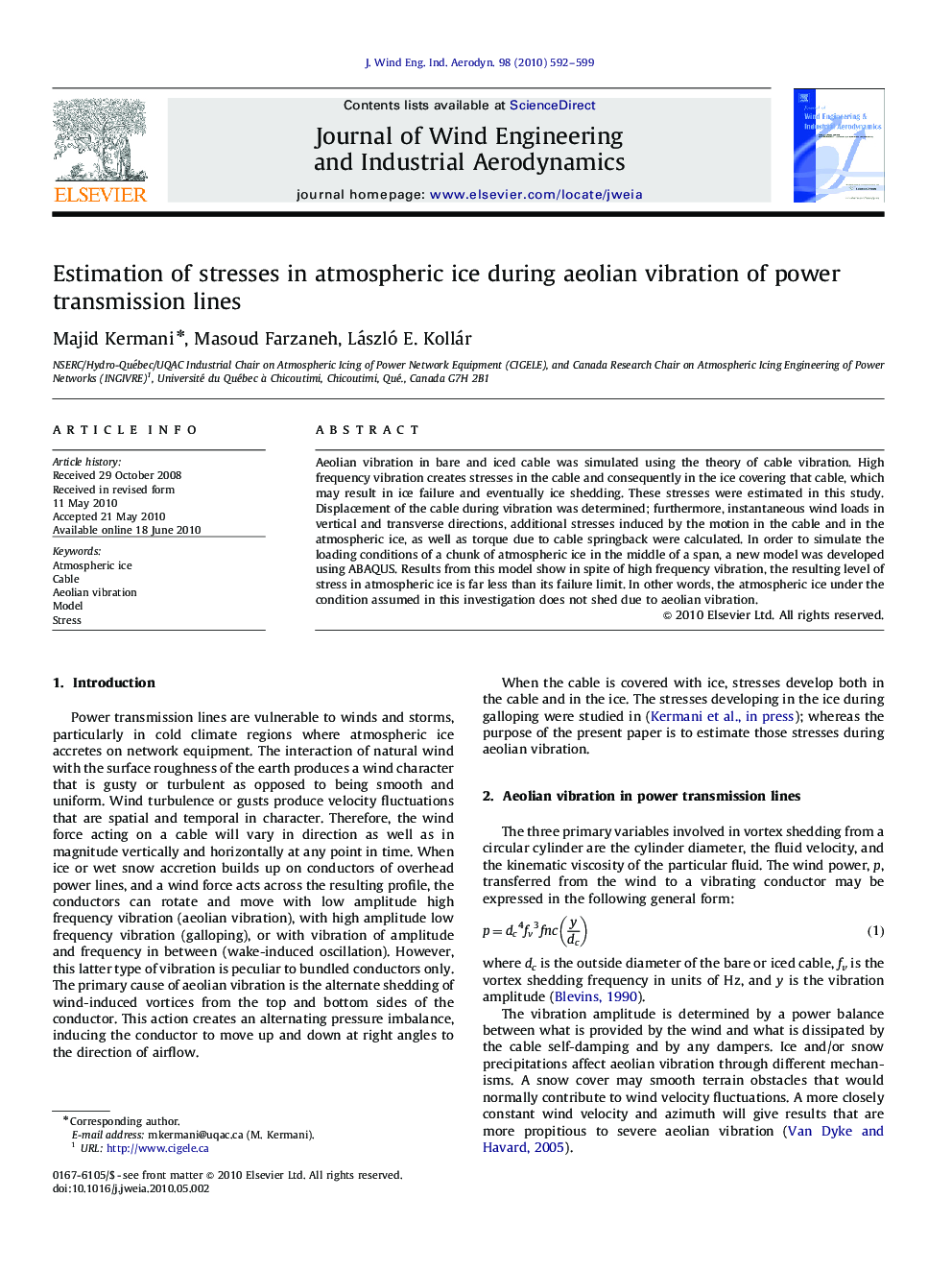| Article ID | Journal | Published Year | Pages | File Type |
|---|---|---|---|---|
| 293721 | Journal of Wind Engineering and Industrial Aerodynamics | 2010 | 8 Pages |
Aeolian vibration in bare and iced cable was simulated using the theory of cable vibration. High frequency vibration creates stresses in the cable and consequently in the ice covering that cable, which may result in ice failure and eventually ice shedding. These stresses were estimated in this study. Displacement of the cable during vibration was determined; furthermore, instantaneous wind loads in vertical and transverse directions, additional stresses induced by the motion in the cable and in the atmospheric ice, as well as torque due to cable springback were calculated. In order to simulate the loading conditions of a chunk of atmospheric ice in the middle of a span, a new model was developed using ABAQUS. Results from this model show in spite of high frequency vibration, the resulting level of stress in atmospheric ice is far less than its failure limit. In other words, the atmospheric ice under the condition assumed in this investigation does not shed due to aeolian vibration.
